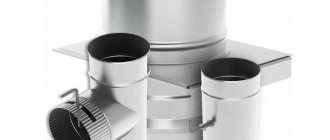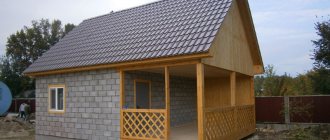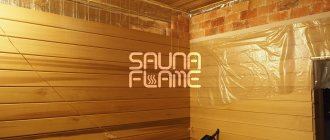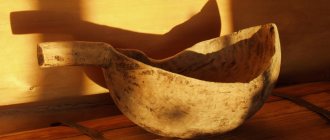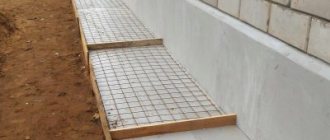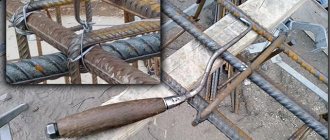Cinder block is a material that is made from industrial waste, so certification for its production is not required.
The same fact applies to the blanks in which products are produced. Therefore, the elements can be manufactured in self-made devices. Let's figure out how to do this correctly so that neither the dimensions of the products nor their performance indicators are affected?
What are blanks?
Since cinder block material varies in size and appearance , there is no single template from which standard products can be produced. Therefore, in the production of slag concrete, special collapsible containers are used, consisting of 4 walls, a bottom (in some types of blanks a bottom is not provided) and matrices (one or several replaceable ones, depending on the size and size).
The number of matrices depends on the volume of products that need to be produced in 1 day. Matrices can be made of wood or metal.
Types of designs
Blanks for the production of cinder blocks are divided according to the material from which they are made and the number of voids in the future product. For the first category, you can write the following. They are:
- Plastic.
- Wooden.
- Metal.
Plastic
Plastic blanks for cinder block products on an industrial scale are not particularly popular. They will not be able to withstand constant pouring over a long period of time . This greatly limits their scope of application. Therefore, only a few manufacturers produce for sale plastic containers for pouring slag concrete.
The plastic structure comes in only one size – 390x190x188 mm.
But the advantage of such structures is that they are light in weight and easy to operate , because the walls of the workpiece do not need to be lubricated each time with used machine oil or a special self-destructive lubricant. In addition, their price is much cheaper than the same products made of metal or wood.
Wooden
Wooden structures are a rectangular box made of laminated plywood. They can be used both in production for the manufacture of large volumes of products, and for home production of cinder blocks.
To give the walls greater rigidity, clamps are used that tighten all 4 walls . And so that the cinder block solution does not destroy the structure from the inside, the bottom and walls are covered with polyethylene.
The advantages of containers made of wood are their average, affordable price (lower than those made of metal), light weight, making the workpieces easy to move around the site and lift, as well as the number of fills - on average 50 times.
But there is also a minus - the material is sensitive to moisture , so pouring the solution into wooden forms should only be done in the fresh air, in dry weather, and the filled forms should be stored in a well-ventilated, not damp area.
Metal
Metal forms come with or without a bottom. And the presence of a bottom divides metal products into solid and collapsible. If there is no bottom in the mold, then the walls of the product do not have sufficient rigidity, so in industrial production they mainly use blanks with a bottom 6 mm thick.
The bottom can be further strengthened with channels, and special metal inserts can also be used, which will allow the production of cinder blocks with a tongue-and-groove system (for partition slabs).
The most popular metal forms are made into 35, 63 or 70 blocks of standard sizes 390x190x188 mm .
Features of wall material
One of the secrets of the popularity of cinder blocks is their low cost. The reason for this is the ability to use waste from metallurgical production and other fillers in the manufacture of products, which are easy to obtain.
Supplements
In addition to Portland cement and sand, cinder blocks may include:
- wood chips;
- gypsum;
- granite chips;
- expanded clay;
- brick fight;
- fine gravel;
- ash;
- perlite;
- broken glass;
- needles;
- slags;
- crushed stone screening.
The proportions when mixing the solution depend only on the selected raw material - on the composition of the fillers. A mandatory requirement is sufficient thickness to prevent the mixture from spreading. The grade of cement plays an important role: it should be quite high - at least M400.
To improve performance characteristics, plasticizers are sometimes added: usually 5 grams are taken per block. This component provides frost resistance, strength, and improves water resistance.
Proportions
There is no universal “slag” composition. Each artisan who has been making cinder blocks for quite some time has his own, time-tested, ratio of components. If we talk about industrial production, they use the following recipe:
- blast furnace slag - 7 parts;
- coarse sand - 2;
- Portland cement - 1.5;
- water - 1.5-3.
To obtain colored cinder blocks, additional chalk or crushed red brick is added to the solution. Questions may arise regarding the amount of water. You need enough liquid so that the mixture does not spread. It's simple - you need a test. To ensure the ideal consistency, a handful of the prepared solution is thrown onto the ground. The correct mixture should crumble. If you collect it and then squeeze it in your fist, it should again become a dense lump.
Made independently, the machine for making blocks makes it possible to produce different cinder bricks:
- Solid products. Their advantage is the maximum safety margin. Disadvantage: low thermal insulation qualities.
- Hollow blocks. They retain heat quite well and have decent sound insulation characteristics. To provide the material with the required level of strength, the volume of the cavities should be 1/3 of the total volume.
Exceeding this proportion does not guarantee the reliability of cinder blocks if they plan to build load-bearing walls. For interior partitions, as well as as a facing material, you can use products with a high void ratio of 40%.
The dimensions of homemade products can be any. Some settle on standard sizes - 190x188x390 mm, but many decide to use multiple sizes - 200x200x400 mm. The reason is the ability to simplify the interface with other elements of the building being constructed.
Characteristics
They may vary slightly. The quality depends on the manufacturing method, on the waste that is used as fillers. However, any material has common characteristics.
- Weight. The weight of a hollow block is 18-23 kg, a solid slag concrete stone is 25-28 kg. There are semi-blocks (90x188x390 and 120x188x390 mm), they tighten by 10-13 kg.
- Coefficient of thermal conductivity. Here, the properties of the wall material depend more on the type of fillers, however, the indicators of cinder blocks are among the lowest: 0.27-0.65 W/m*K.
- Density and compressive strength. The first indicator depends on the properties of the fillers and can be 750-1455 kg/m3. Brands of slag concrete - M35-M150. The number means kilograms, the pressure of which leads to complete destruction of the sample.
- Service life - 30 years (handicraft production), 100 years (industrial production). The durability of the material is affected by the climatic zone in which the building is located.
- Environmental friendliness. In this “nomination” cinder blocks are at the bottom of the list, since waste from metallurgical production does not give hope for the safety of the product. For this reason, they are recommended to be used only for the construction of utility buildings or garages.
Despite the last point, factory-made cinder blocks remain a very popular building material in low-rise construction. Not only walls are built from them: some choose these stones to build a foundation. However, homemade bricks are completely unsuitable for this important role. But there is a chance to get products without particularly dangerous components.
Is it possible to make it yourself?
For a large volume of cinder block production, you need not to have homemade equipment and blank molds, but high-quality devices that would create the ideal geometry of the products.
But in order to make blocks only for private, small-scale construction, it is not necessary to buy expensive tools and equipment . You can make molds for cinder concrete with your own hands, simply using available materials.
Even if you don’t have the material at home from which you can make molds, you can ask your neighbors, family and friends. Surely, in the bins of their garage, shed or attic there are several pieces of sheets of steel, metal, iron, wood, and boards. A little active search and perseverance - and materials for blanks will be found.
To build your own molds you will need:
- material for the walls of the mold (metal, iron, wood, plastic);
- self-tapping screws, bolts, nuts - for twisting elements together;
- grinder, metal scissors, hacksaw - for cutting the material into the required pieces according to size (depending on what material will be chosen);
- vices and clamps - for connecting the sides of the form and giving them rigidity;
- welding machine;
- a sheet of metal or steel to create the bottom (approximately 3-6 mm thick);
- a pipe with a diameter of about 9 cm or wine or champagne bottles - to create voids in the future block;
- fittings with a diameter of 12 mm.
Types of building blocks
Brick is still the main material in the construction of high-rise buildings, but for low-rise construction it is cheaper to use other building materials. If you exclude wood, which is now expensive, the choice will still be varied. Modern wall materials are made from:
- foam concrete;
- slag concrete;
- aerated concrete;
- expanded clay concrete.
Block characteristics comparison table
As a filler for cinder blocks, a variety of and sometimes exotic materials are used, which are industrial waste: screenings, broken glass and bricks, sawdust, wood chips.
Let's first consider how expanded clay blocks and cinder blocks are made independently, as the most budget-friendly among all the above building materials.
Instructions for creating homemade containers
Containers for homemade molds can be of different sizes, both standard and non-standard. It all depends on the wishes of the owner and his preferences.
Please note : the larger the blocks, the less mortar will be needed to lay them and the fewer cold bridges there will be through the seams between the products.
Large blocks in size are convenient and practical, but it is better not to make forms over 2 m in length or width , because such formwork will be bulky and difficult to transport and lift. It is better to make several formworks, but smaller ones.
To make your own mold, you need to:
- First, decide on the dimensions of the future workpiece, and then cut out the building material according to these dimensions (4 walls, bottom and, if necessary, partitions).
- Set the height of the elements and cut the walls to this height.
- The walls of the formwork must be mounted in such a way that the transverse parts are inserted into the longitudinal ones and thereby form cells of the same size.
- Form the bottom from building material or line it with cellophane instead of the bottom.
- If you need to make hollow cinder blocks, then you will also need void formers for these purposes. They can be wine or champagne bottles filled with water. Bottles can replace pipes with a diameter of about 6 cm or rectangular wooden blocks.
- Insert void formers into the container and secure them. The number of voids in the finished product should not exceed 40% of the total mass of the block.
- Pour the solution and wait a day so that the material can be removed from the mold and transferred to the place for subsequent drying.
DIY expanded clay blocks
If there are no problems with expanded clay in your region, you can consider yourself lucky: expanded clay concrete, despite its cheapness, is rarely found on sale, but this building material is characterized by a whole range of positive properties. To make expanded clay blocks you will need:
- expanded clay itself;
- cement;
- sand;
- water.
The main material for creating the mixture will be fine expanded clay
When mixing the solution, it is important to adhere to a certain sequence: expanded clay is added to the water, then cement, and finally sand. The proportions of the solution are as follows: for nine liters of water, use 54 kg of expanded clay, 9 kg of cement and 27 kg of sand
The result will be a mixture weighing about 100 kilograms, with the yield of finished blocks in the amount of 9-10 pieces.
Difficulties and errors during work
If a person does not have the ability to work with his own hands, then it is better not to undertake making cinder blocks on his own. Despite the fact that cinder blocks may not be a certified product, they must be manufactured using technology. Therefore, it is necessary to carefully calculate the dimensions of the walls and bottom of the formwork so that the finished blocks are of the correct shape and dimensions.
For better production of cinder blocks, you need to use additional equipment, such as a vibrating machine. This will allow you to compact the product and give it the desired shrinkage. But you will either have to buy such equipment or make it yourself.
If you do not lubricate the mold walls with machine oil, oil paint or special lubricant before pouring the solution, then it will be very difficult to remove the products from the workpiece. The elements should be removed from the mold the next day , but so that they do not crumble in your hands when removing them.
To avoid difficulties and not make mistakes when making cinder blocks at home, it would be useful to watch a video on this topic:
Specifics of production of building blocks by vibrocompression
A brick press is a device that uses the principle of forming products using a vibrator by creating excess pressure (“load”).
Vibrocompression involves the use of a rigid concrete mixture, which contributes to the production of the most strong, durable and reliable products. Since this technology uses a “weight”, it becomes possible to use coarse aggregates, including materials that are waste from various industries. The use of expanded clay, slag, sawdust, broken bricks, and screenings reduces the cost of manufacturing building blocks. A brick making press involves the use of a rigid matrix, due to which the geometric dimensions of the blocks are more repeatable, which has a positive effect on the speed and quality of construction of load-bearing structures.
Sequence of operations when using vibration compacting equipment:
- the prepared working mixture is poured into a special measured form;
- a measured portion of the mixture enters the molding matrix, where it is compacted under the influence of the punch, while the proportion of air in the semi-dry mixture is reduced by more than half (up to 25%);
- during compaction of the mixture, a vibration mechanism is activated, and the combination of pressure and vibration forms the most dense cement paste, in which the filler particles are placed at a minimum distance from each other, while the air concentration in the mixture is reduced to 3-5%;
Since the working process is accompanied by high pressure on the mixture, various materials, including coarse-grained ones, can be used as fillers
- the impact of the punch lasts no more than a minute, after which the formed product is squeezed out of the matrix using an extruder (as an option, the matrix rises up, and the product remains on a special pallet;
- the resulting blocks are dried (naturally or by steaming).
Drying
Drying is another important step in the production of slag blocks. The production process itself usually takes about 2-4 days. Sufficient strength characteristics that allow you to proceed to the use of blocks are usually achieved after 28 days. This is exactly the amount of time needed to obtain high-quality building material suitable for carrying out certain works. Cinder blocks can also dry naturally. Typically, this process takes place using a simple method of producing materials (in conventional forms).
To dry cinder blocks, special chambers are often used to prevent cracking during the hardening process. To prevent the blocks from becoming cracked, they must be moistened from time to time. This process is especially relevant if the production process is carried out in hot weather.
Vibropress for tiles
All brick making machines can again be conditionally divided into several categories based on the size of the forming zone. That is, roughly speaking, what kind of products can be produced on such a brick press. The smallest and medium ones are suitable for making paving slabs and small borders. The maximum size of their forming zone is no more than 0.3 m². Therefore, they can only produce tiles. As a rule, they all involve manual selection of the finished product, which dictates the maximum load weight that one person can handle. This is no more than 35 kg.
Each of the brick making machines for paving slabs has its own performance indicators and speed of formation of the loading cycle. The fastest of them form a block in 8-10 seconds, and the time it takes to form a block with handicraft machines is two to three minutes. Consequently, productivity is very different, and mass production of tiles using such equipment is out of the question.
Classification of vibration machines
This subtype of construction equipment is practically unfamiliar to the mass consumer, but brick making machines are manufactured by many domestic companies. There is no single standard regarding the principles of structural calculations, but a classification of such units exists, even if only conditionally. Vibrating machines are divided according to the following characteristics:
- by control method (from manual to fully automated);
- by the number of blocks produced per one working cycle;
- by type of product produced (hollow/monolithic);
- according to the degree of convenience and practicality in operation.
Devices that allow the production of several cinder blocks in one cycle are more productive, but require the use of physical labor and the involvement of several workers in the technological process.
The most important part of the machine is the shape
A professional block vibrating machine can produce more than three finished products per cycle. Being equipped with many additional devices and accessories, a high-performance vibrating machine significantly facilitates the work process, requiring the use of minimal amounts of manual labor.
The cost of such devices can vary greatly, because they are aimed at different categories of consumers. Budget category machines have such a simple design that some experts prefer to make such units themselves. At the same time, the technical characteristics of homemade vibrating machines are not inferior to factory ones in terms of important operational characteristics.


